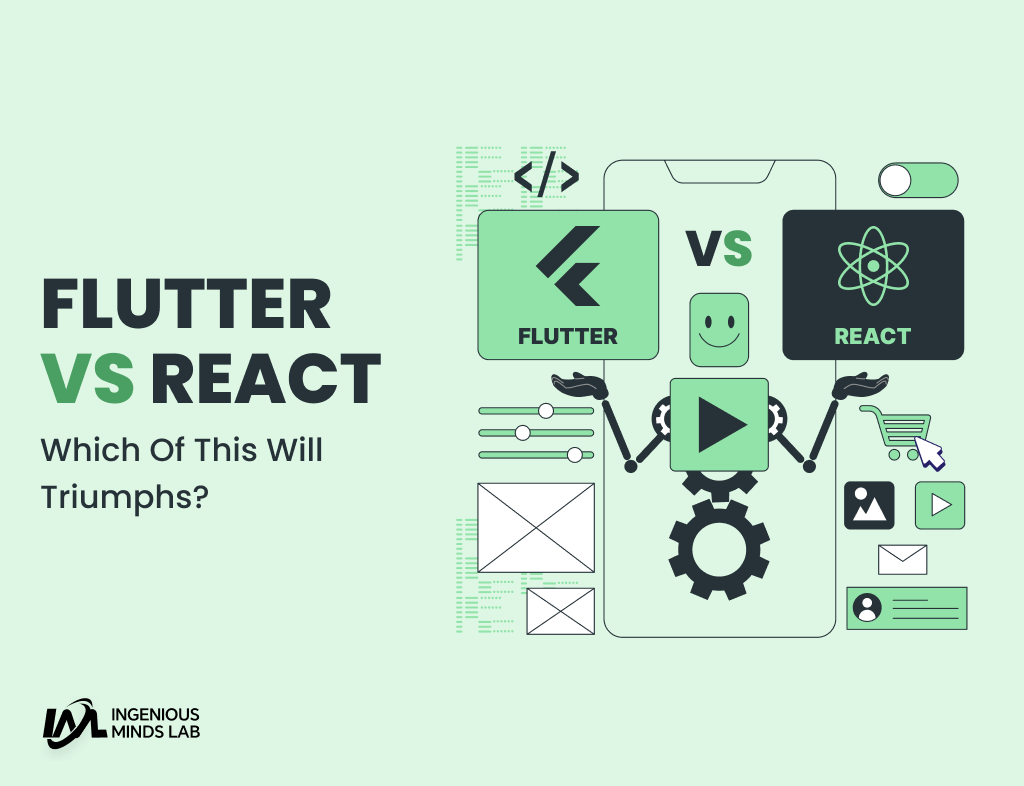Flutter and React Native are two of the most popular frameworks for developing mobile applications. While they both have their strengths and weaknesses, the ultimate question remains – which one will come out on top? In this blog, we’ll dive deep into the features and capabilities of both platforms to determine which one is the true champion of mobile app development.
Flutter and React Native are two of the most popular frameworks for building cross-platform mobile applications. Both are widely used by developers and businesses alike, but which one will ultimately triumph? In this blog, we will compare the two frameworks in terms of their features, performance, community support, and more to help you decide which one to choose.
What is Flutter?
Flutter is an open-source UI toolkit developed by Google that allows developers to build natively compiled applications for mobile, web, and desktop from a single codebase. It uses the Dart programming language, which is known for its ease of use and performance.
What is React Native?
React Native is another open-source framework, created by Facebook, that allows developers to build cross-platform mobile applications using a single codebase. It uses the JavaScript programming language and is built on top of the popular React library.
Features
Flutter and React Native offer a similar set of features, such as hot reload, which allows developers to make changes to the code and see the results in real-time. However, Flutter has a few features that React Native does not, such as its own set of customizable widgets, which makes it easier for developers to create custom designs. Flutter also has a built-in support for animations and gestures, which is not available in React Native.
Performance
Performance is one of the most important factors to consider when choosing a mobile development framework. Flutter’s performance is generally considered to be better than React Native’s, mainly because it compiles code to native ARM code, which allows for faster execution. Flutter also has a smaller app size and faster startup time than React Native.
Community Support
Both Flutter and React Native have large and active communities, which means that there are plenty of resources available for developers to learn and get help. However, Flutter’s community is relatively new compared to React Native, which means that there may be fewer resources available for more advanced topics. On the other hand, React Native’s community has been around longer, and there are more libraries and plugins available for developers to use.
Learning Curve
When it comes to learning curve, React Native has an advantage over Flutter, mainly because it uses JavaScript, which is a widely used language that many developers are already familiar with. Flutter, on the other hand, uses Dart, which is less commonly used and may require more time to learn.
Conclusion
In conclusion, both Flutter and React Native have their strengths and weaknesses, and choosing between the two largely depends on the specific needs of your project. If performance is a top priority, then Flutter may be the better choice. If you’re more concerned with community support and the ease of learning, then React Native may be the better option. Ultimately, both frameworks are capable of building high-quality cross-platform mobile applications, and the decision will come down to personal preference and project requirements.
To summarize, Flutter and React Native are both excellent choices for building cross-platform mobile applications. Flutter offers better performance and a unique set of features, such as customizable widgets and built-in support for animations and gestures. React Native, on the other hand, has a larger and more established community, making it easier to find resources and support. Additionally, React Native uses JavaScript, which many developers are already familiar with, making it easier to learn. Ultimately, the decision between Flutter and React Native comes down to personal preference and the specific needs of your project. Both frameworks offer high-quality cross-platform development solutions, and it’s up to the developer to choose which one will work best for their needs.
In conclusion, both Flutter and React Native have their unique strengths and weaknesses, and choosing the right technology for your project depends on various factors. While Flutter offers a more modern and streamlined development experience, React Native has a larger community and support network. However, both frameworks have proven to be successful in developing high-quality apps for different industries. Ultimately, the choice between Flutter and React Native comes down to the specific needs of your project, and with the right approach and strategy, you can build incredible mobile apps that will thrive in the highly competitive digital world.

